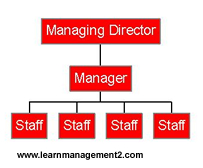
CRISIS COMMUNICATION
Crisis is a sudden and an unexpected event that may occur either naturally or as a result of human error, intervention or even malicious intent. Crisis communication is generally considered a sub-specialty of the public relations profession that is designed to protect and defend an individual, company, or organization facing a public challenge to its reputation. These challenges may come in the form of an investigation from a government agency, a criminal allegation, a media inquiry, a shareholders lawsuit, a violation of environmental regulations, or any of a number of other scenarios involving the legal, ethical, or financial standing of the entity. US research showed that 53% of all businesses hit by a crisis will not survive if they don't have an adequate recovery plan in place. Crisis communication is different from other forms of communication. A crisis creates extreme pressure.
Preparing for a Crisis
· Meet with management team to discuss options in a variety of crises. Consider all possible what-ifs.
· Delegate responsibilities and make clear who is responsible for what in a given crisis.
· Consider where you will meet if there's a fire or how you will communicate if the phone lines go down.
· Draft a loss-prevention manual to determine ahead of time how you will minimize loss. Doing so may lower your insurance liability payments.
· Post emergency evacuation routes in several sites in your buildings where they can be readily seen by employees.
· Have fire equipment where it can be readily accessed and seen.
· Make sure that there are employees trained ahead of time to deal with life and death situations, such as giving cardiopulmonary resuscitation (CPR).
· Drill employees regularly so that they will know what to do and not panic if a crisis situation occurs.
· Remember to plan for a variety of crises. Although a visit from the Immigration and Naturalization Services or the Occupational Safety and Health Administration is not a matter of life or death, your receptionist should know how to respond ahead of time.
Crisis Communications Dos
· Do demonstrate care, concern, compassion
· Do demonstrate action to solve problem
· Do tell the truth
· Do be concise
· Do release only confirmed facts
· Do defuse negatives
· Do dispel rumors
· Do provide constant updates to media and public
· Do avoid business jargon
· Do keep your message simple
· Do repeat key messages again and again.
Crisis Communications DON’TS
· Don’t speculate
· Don’t discuss liability
· Don’t place blame
· Don’t estimate costs
· Don’t talk off-the-record
· Don’t give exclusives
· Don’t guess when conditions will return to normal
· Don’t reveal proprietary information
· Don’t presume solutions = end of the story
Example of food and beverage industry:
Food safety, crisis communications tools win chains' attention: In the aftermath of high-visibility foodborne illness outbreaks during the past 18 months, some restaurant chains are achieving enhanced food safety or improved crisis communications by leveraging technology that might not immediately come to mind for those purposes. The Web-based Instill Quality & Compliance Management system being used by the Subway chain's Independent Purchasing Cooperative, or IPC, is one such technology, as is the GroupCast LLC voice-messaging tool being used by Cheyenne, Wyo.-based Taco John's.
Reference:
http://www.ehow.com/how_15980_prepare-crisis-business.html
http://www.restaurant.org/events/business_continuity/index.cfm
http://en.wikipedia.org/wiki/Crisis_communications
http://findarticles.com/p/articles/mi_m3190/is_45_41/ai_n21106404













